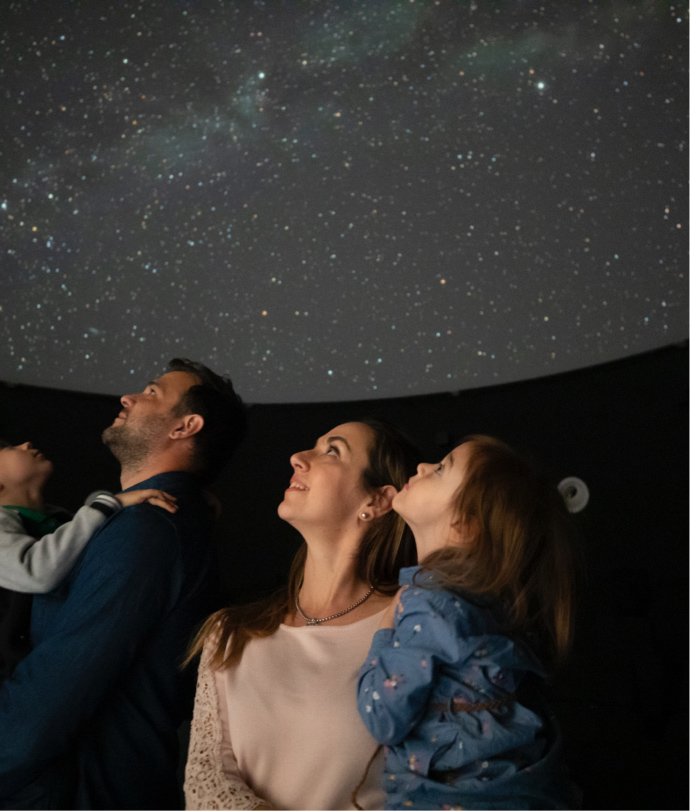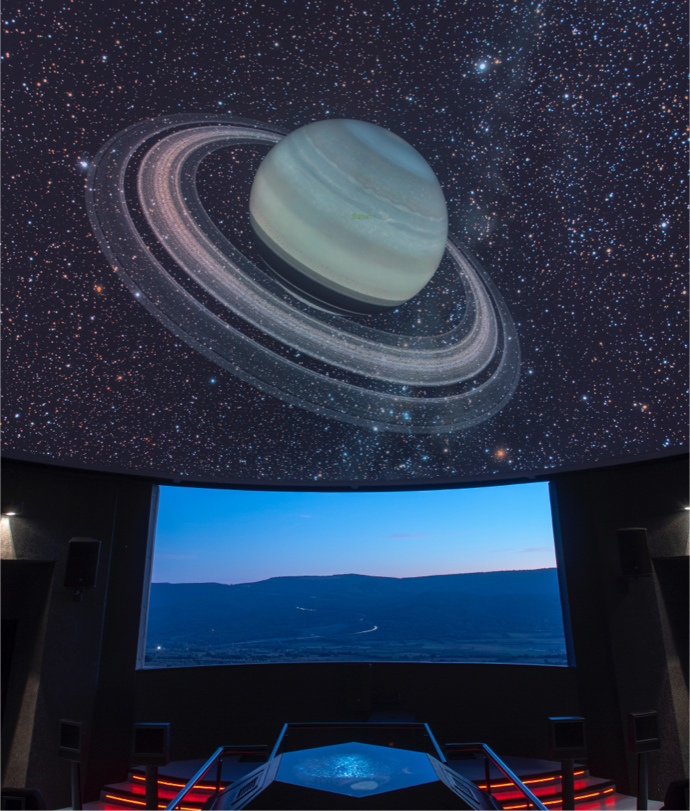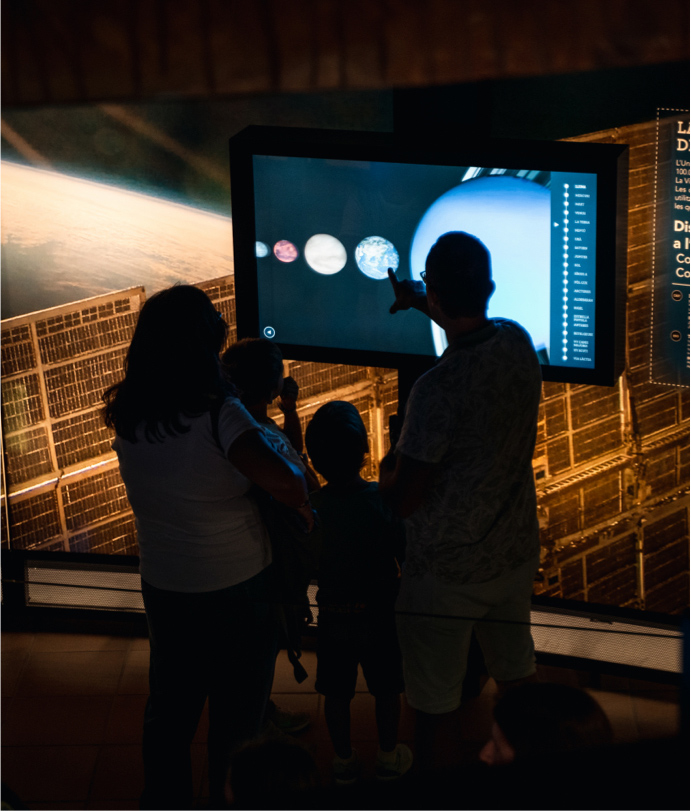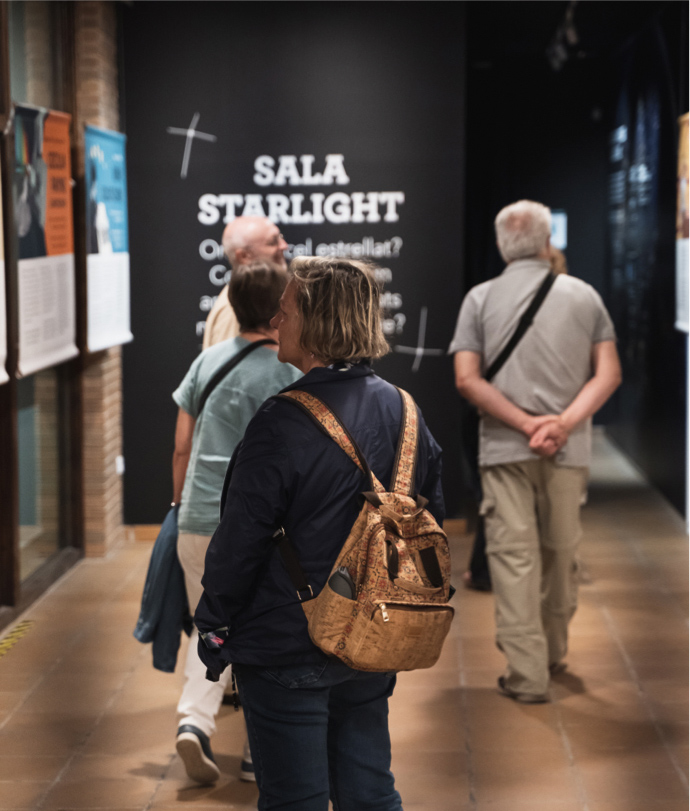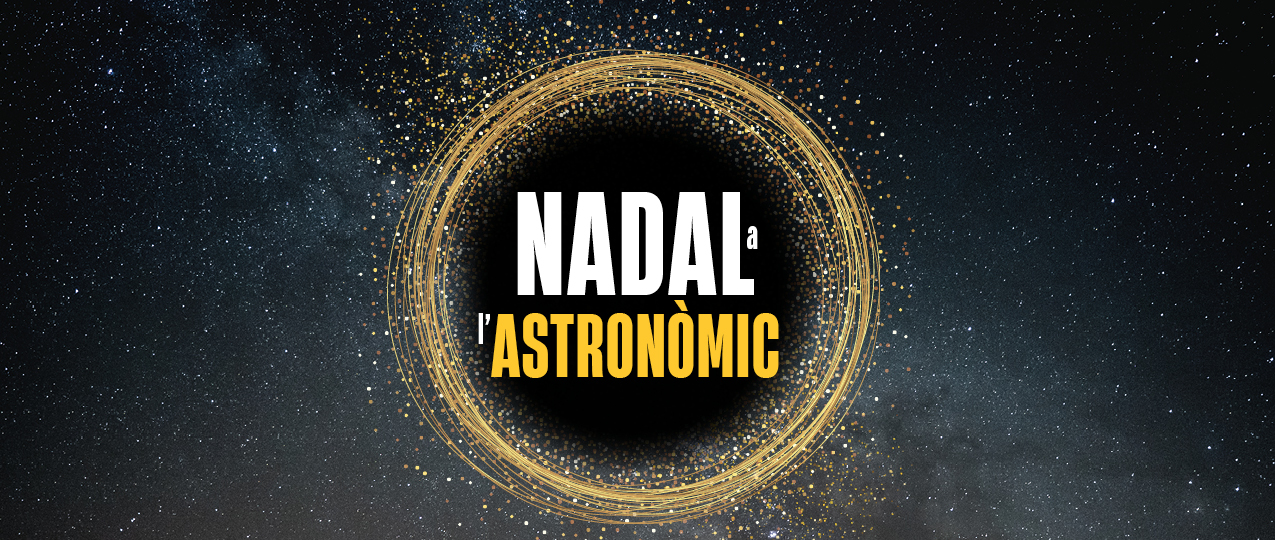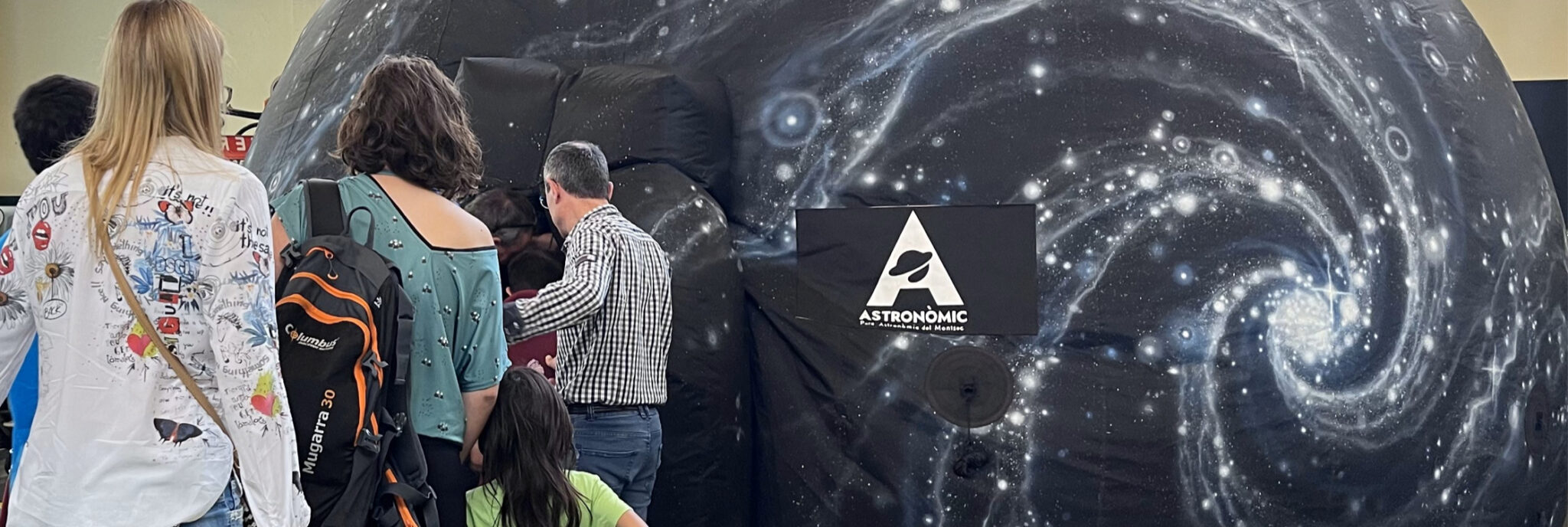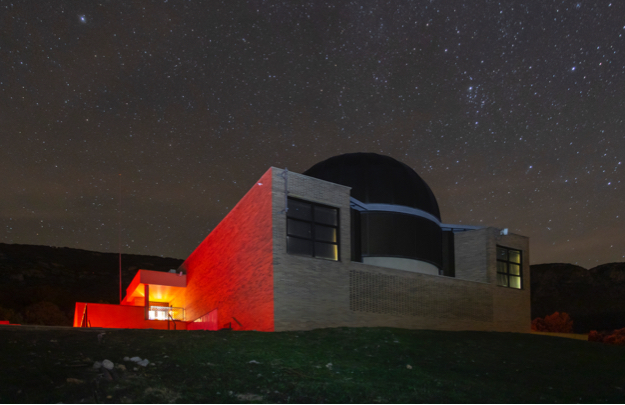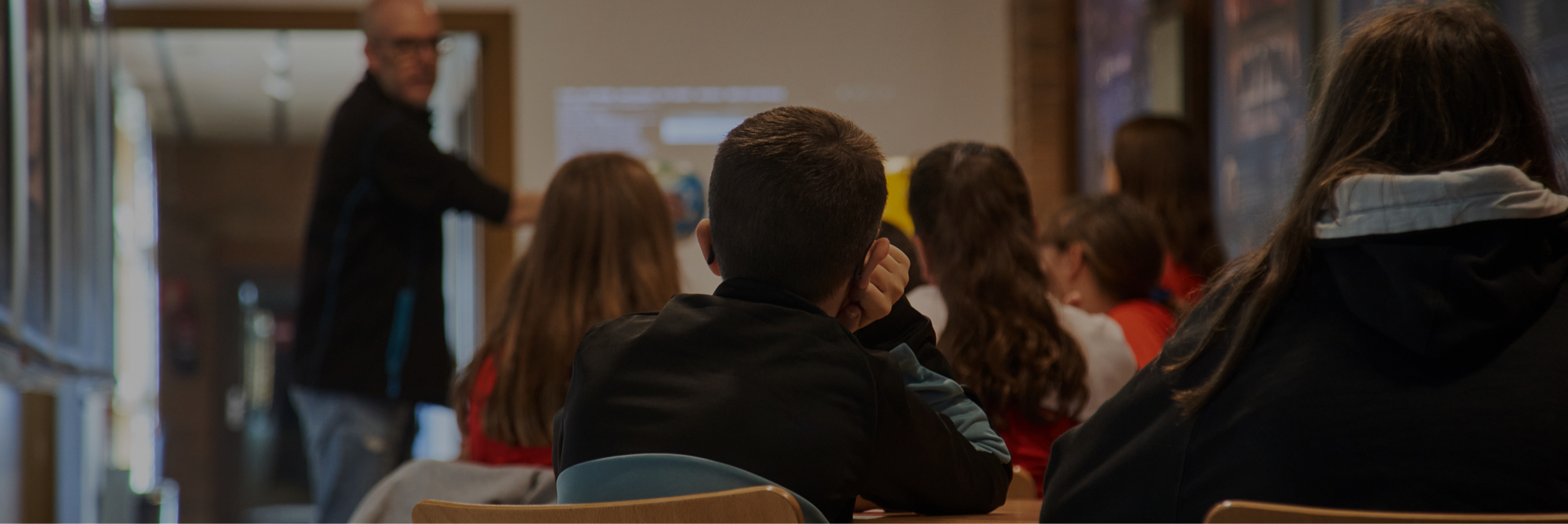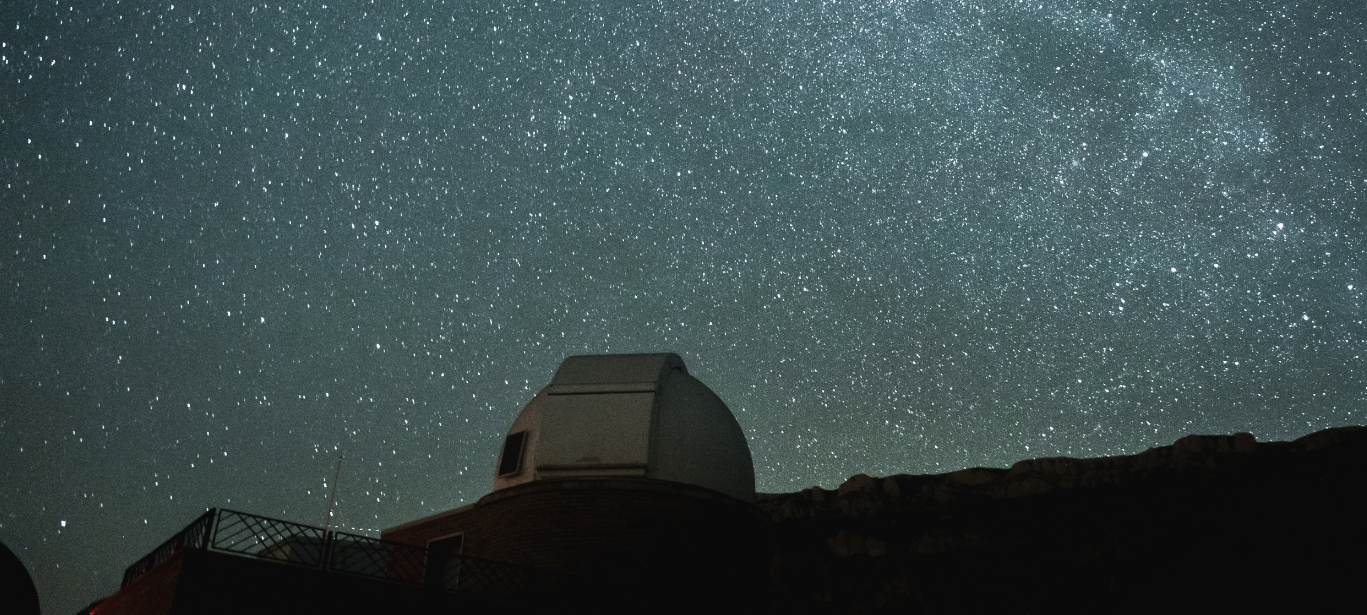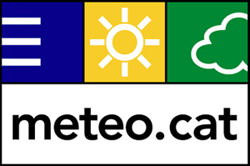Secondary Education (1st cycle)
Planetarium sessions
The planetarium session consists of several parts. Initially we perform an astronomical projection and then we explain the sky with the simulator. We will see a reproduction of the sky seen at Montsec during the night of the day of the visit. We will highlight the brightest planets and stars as well as the different constellations that are visible. In addition, the simulator will allow us to travel in time and space to see how the visible objects in the sky change over the hours and days or also according to the area of the Earth where we are. We will have the opportunity to see some of the planets of the Solar System up close and learn about the details that make them more special. We will also be able to travel beyond the limits of the Solar System and discover some of the secrets that are hidden in the far reaches of the Universe.
Finally we will contemplate the secret that hides the planetarium and that makes it unique in the world!
Below is a brief summary of the screenings you can choose from:

VOYAGER
During the second half of the 20th century, as part of the space race, great advances were made in the exploration of outer space.
In 1977 NASA sent the Voyager probes into space that explored the planets Jupiter, Saturn, Uranus and Neptune. Thanks to the information provided by Voyager we will discover some curiosities about these planets and some of their satellites. However, Voyager’s journey is not over. What will they find beyond the Solar System?
PIRINEUS LA NUIT
In some of the most remote valleys of the Pyrenees you can still contemplate the incredible beauty of the night sky. On the other hand, in large cities, the excess of artificial light causes negative effects beyond the impossibility of seeing a truly dark sky. In this documentary we will discover the causes behind light pollution and how we can illuminate cities more intelligently
to mitigate its effects in the climate change context that affects us.
CAP COM GO
On July 20, 1969, the first astronauts arrived on the Moon. It was a historical milestone. Now, what steps were taken beforehand in order for the mission to be a success? What difficulties had to be overcome? Was it the only trip to the moon?
In this magnificent documentary we will discover in more detail the great history of the Apollo missions.
UNVEILING THE INVISIBLE UNIVERS
Since ancient times, humans have been interested in observing the sky. However, with the naked eye we can observe only a very small part of the Universe. Since the introduction of the first telescopes in the 17th century, we have been able to learn about many of the elements that make it up, which would otherwise be invisible to our eyes. So, we will see in more detail the operation of these instruments and also some of the celestial bodies and the most spectacular phenomena that telescopes have allowed us to discover.
WE ARE STARS
Have you ever wondered what we are made of? What is the origin of all things? In a simple tent in the middle of an amusement park we can find the answers to these questions.
We will take a journey through the history of the universe from its beginnings to the present day.
We will discover how the first atoms were formed, the birth of stars, nuclear fusion, supernovae, the origin of life and
its evolution Are you joining us?
TO SPACE AND BACK
In recent decades, the development of new technologies has allowed us to advance our knowledge of the universe.
However, did you know that these technologies have other applications beyond space exploration? We will discover how all these elements, which were initially designed for the observation of the Universe, play a very prominent role in our daily life.
TRAVELING WITH THE LIGHT
Light plays a very important role in our lives. Already in prehistory the discovery of fire played a key role. Also the ancients, thanks to the observation of the night sky, knew what season of the year they were in.
Accompanied by a child and his mother, we will discover how light is formed in a star like the Sun and its role, not only in the study of the universe, but also in our everyday life.
DAWN OF THE SPACE AGE
What was the first artificial satellite around the Earth? When did man reach the moon?
From the second half of the 20th century, great advances were made in the space race in the context of the Cold War. In
this session we will see its evolution from the launch of the first artificial satellite, Sputnik, to the present day through events such as the first trips outside the Earth’s atmosphere or the arrival of man in the Moon in the well-known Apollo missions.
STARS
Why do the stars shine? How is its evolution from formation to its end?
The planetarium will bring us closer to knowing what the stars are like, the great energy factories of the universe. We will be able to see how the biggest ones end their lives in a big explosion that we call a supernova or how some live grouped together forming clusters. We will also see how astronomy has evolved throughout history and learn about some of the most mysterious elements in the universe.
NATURAL SELECTION
At the beginning of the 19th century, science was making progress, but much of the knowledge we have today had not yet been formulated. For example, at that time it was believed that the existence of the Earth was only a few thousand years. In this context, a young Charles Darwin embarks on board the HMS Beagle, a ship of the British navy with which he will circumnavigate the world. We will accompany Darwin on this journey where he will get to know in more detail species that live in places far from his native England, such as the Galapagos Islands, and which will allow him to formulate his theory of natural selection.
Observations

LET'S OBSERVE THE SUN
Even if it seems a little strange, we can also do astronomy during the day. In this case the observation focuses on the only star we can see, the Sun. We will visit the telescope park and show the instruments used for solar observation. We will comment in detail on the main characteristics of the Sun and discover what its structure is. For centuries we have known that the Sun shows signs of activity such as, for example, the presence of spots, faculae and/or flashes. Therefore, we will explain the reason for their presence and try to observe some of them live.
THE NIGHT OF THE STARS (NIGHT OBSERVATION)
When it is night in Montsec, the best sky in Catalonia, we can discover in great detail all kinds of astronomical objects, be it the Moon, planets such as Jupiter and Saturn, stars or more distant and mysterious objects such as nebulae or galaxies. So, we will visit the
telescope park and, combining observation with the naked eye with the use of telescopes, we will learn more about some of these mysterious objects.
Workshops

THE SUN DIAL
Today we have a multitude of devices to know what time it is at all times, but in the past this was not the case. So how did they do it? Clocks have been manufactured since ancient times which, based on the position of the Sun and seeing what its shadow looks like, have allowed us to know what time it is. In this activity we will build a sundial with simple materials and see how to use it.
LET'S BREAK DOWN THE LIGHT
What is light What are its main characteristics? Why is it of particular interest to astronomers? Already in the 18th century, Newton discovered that white light is composed of light of various colors.
With the help of a simple spectrograph, which we will build on site, we will answer some of the questions raised and discover what the spectrum of light from different sources is, such as, for example, light bulbs or fluorescent tubes.
LET'S BUILD A PLANISPHERE
Just like when we drive around a city we may need a map or a GPS to orient ourselves, to find the stars and constellations
more prominent in the sky we can use a planisphere. We will make this device with very simple materials and learn how to use it to be able to see which stars and constellations are visible at each hour of the night every day of the year.
THE FACES OF THE MOON
The Moon, our only natural satellite, revolves around the Earth. Now, do we always see her the same? If we look at it, we will realize that some days we see it all lit up, other days only a bit and other days we can’t even see it. In this workshop we will learn more about the movements of the Earth and the Moon and we will reproduce them to scale in order to visualize how the phases of the Moon occur and answer questions such as: does the Moon always show us the same face? When does an eclipse occur?

